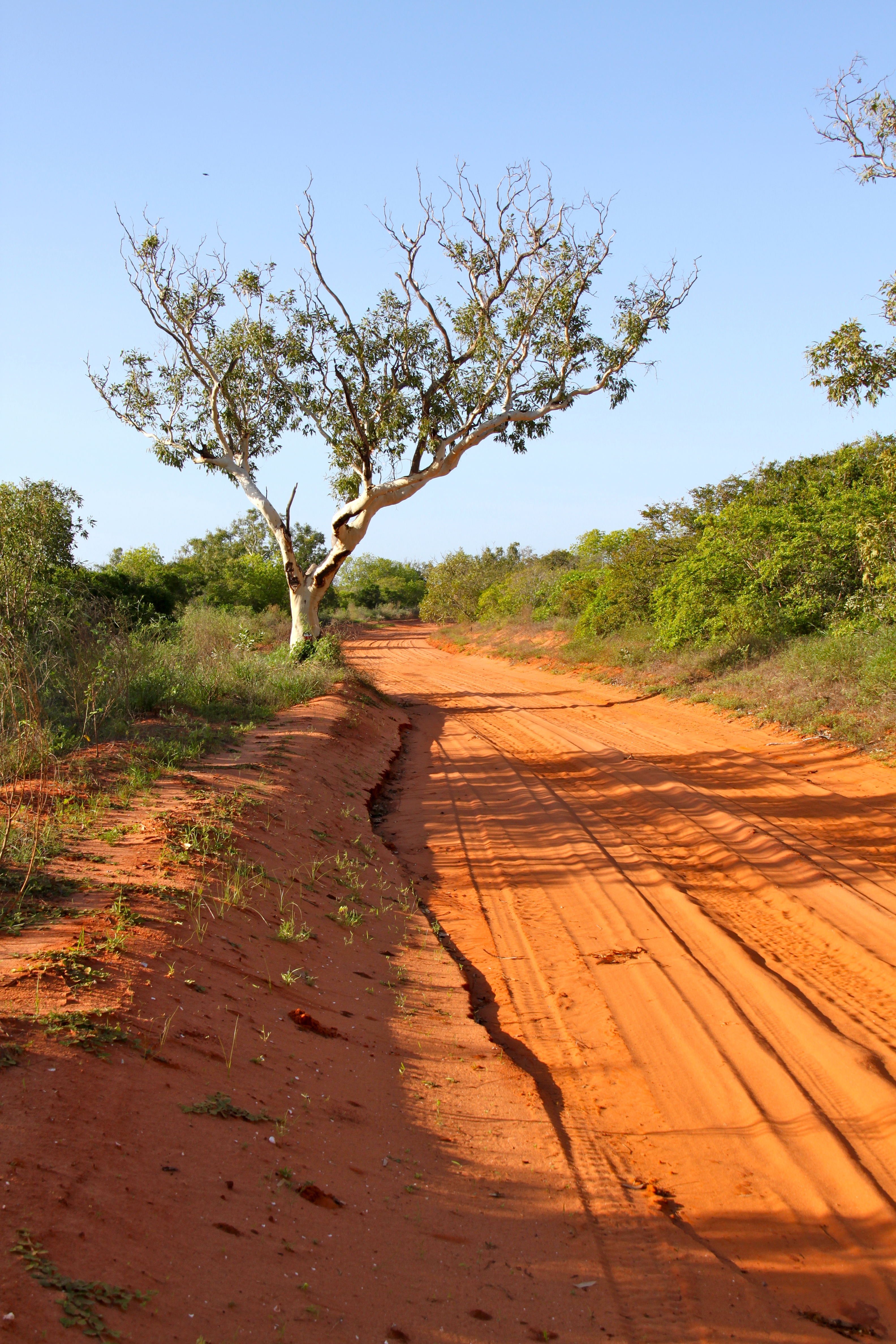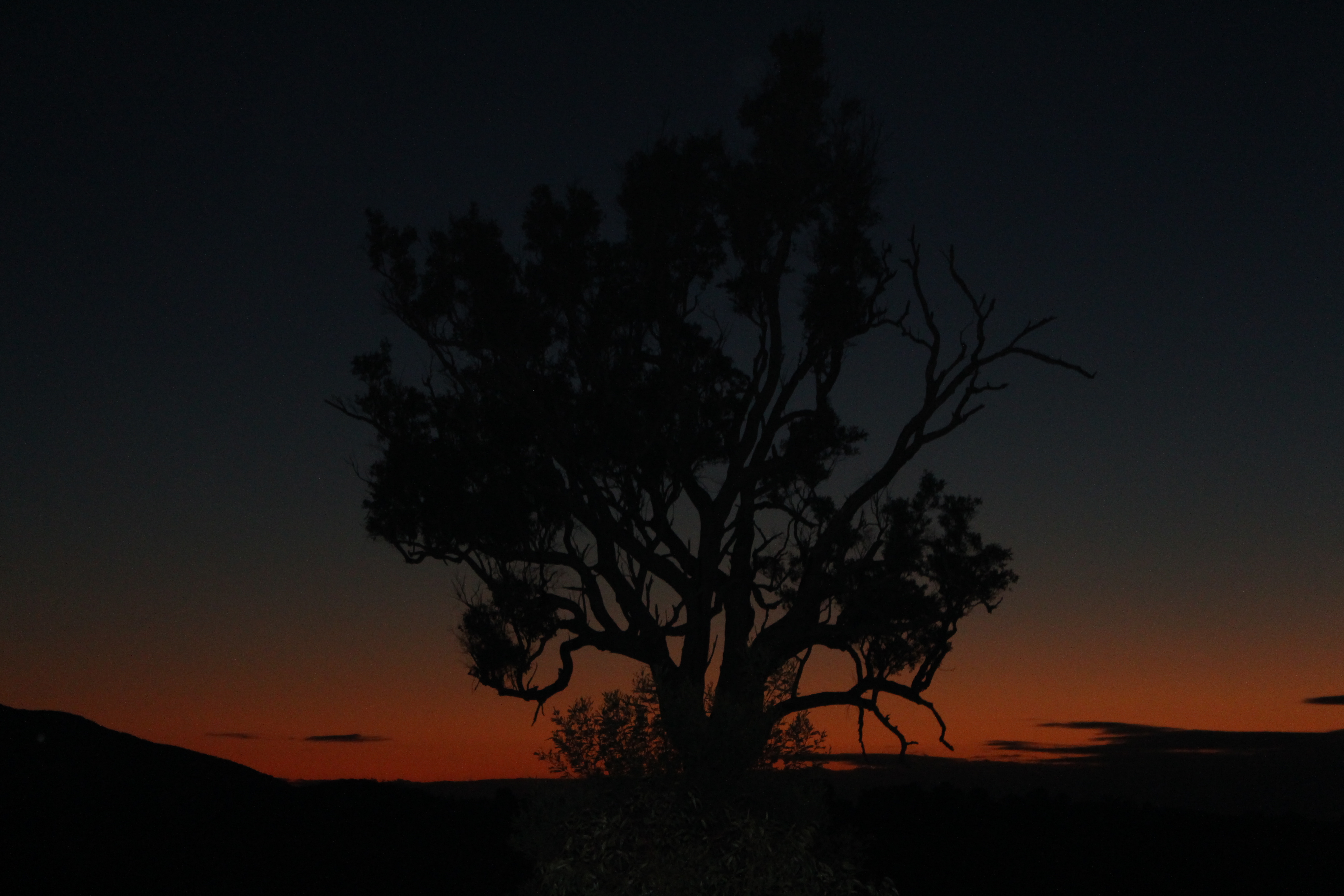|
Pindan Country
Pindan is a name given to the red-soil country of the south-western Kimberley region of Western Australia. The term comes from a local language and applies both to the soil and to the vegetation community associated with it.Lowe (2003). History The word “pindan” was first mentioned in print in 1883 by Mr Edward Townley Hardman (1845 1887) in a preliminary appendix to John Forrest’s report on the Kimberley. He stated: “The only metalliferous deposits as yet observed by me are pindan ironstone, a poor hematite, but in large quantity; and in the Fitzroy gravels, quantities of minute dark heavy grains, which have all the appearance of stream tin. These await further chemical examination, In these gravels, opal, cats-eye, garnet, and amethyst occur, all of inferior quality so far as at present observed. The 1891 report on the General Description and Physical Geography of the Kimberley District by Government Geologist Harry Page Woodward described the Pliocene geological forma ... [...More Info...] [...Related Items...] OR: [Wikipedia] [Google] [Baidu] |
Eucalypt
Eucalypt is a descriptive name for woody plants with capsule fruiting bodies belonging to seven closely related genera (of the tribe Eucalypteae) found across Australasia: ''Eucalyptus'', '' Corymbia'', '' Angophora'', '' Stockwellia'', '' Allosyncarpia'', '' Eucalyptopsis'' and ''Arillastrum''. Taxonomy For an example of changing historical perspectives, in 1991, largely genetic evidence indicated that some prominent ''Eucalyptus'' species were actually more closely related to ''Angophora'' than to other eucalypts; they were accordingly split off into the new genus ''Corymbia''. Although separate, all of these genera and their species are allied and it remains the standard to refer to the members of all seven genera ''Angophora'', ''Corymbia'', ''Eucalyptus'', ''Stockwellia'', ''Allosyncarpia'', ''Eucalyptopsis'' and ''Arillastrum'' as "eucalypts" or as the eucalypt group. The extant genera ''Stockwellia'', ''Allosyncarpia'', ''Eucalyptopsis'' and ''Arillastrum'' comprise s ... [...More Info...] [...Related Items...] OR: [Wikipedia] [Google] [Baidu] |
Acacia Platycarpa
''Acacia platycarpa'', commonly known as the pindan wattle or ghost wattle, is a species of plant in the legume family that is native to northern Australia from Western Australia through the Northern Territory to Queensland. Description It grows as a shrub or tree, 1.5–10 m in height, with rough or fissured bark. It produces cream to yellow flowers from December to June. Distribution and habitat It occurs on red sand soils in pindan, and on dunes, hills and rocky outcrops. In Western Australia it is found in the Central Kimberley, Dampierland, Great Sandy Desert, Little Sandy Desert, Northern Kimberley, Ord Victoria Plain, Tanami and Victoria Bonaparte IBRA bioregion A bioregion is an ecologically and geographically defined area that is smaller than a biogeographic realm, but larger than an ecoregion or an ecosystem, in the World Wide Fund for Nature classification scheme. There is also an attempt to use th ...s. See also * List of ''Acacia'' species References ... [...More Info...] [...Related Items...] OR: [Wikipedia] [Google] [Baidu] |
Acacia Monticola
''Acacia monticola'', commonly known as red wattle, gawar, curly-bark wattle, curly-bark tree and hill turpentine, is a species of plant in the legume family that is native to northern Australia. Indigenous Australians have other names for the plant, the Yindjibarndi peoples know it as ''burduwayi'', the Ngarluma as ''burduwari'', the Nyangumarta call it ''kawarr'' and the Kurrama peoples know it as ''mangkalangu''. Description It grows as a resinous, multi-stemmed shrub or small tree, in height, with grey or reddish-brown minni ritchi bark. The plant normally has a V shaped form with an openly branched spreading crown at times with sparse foliage present. The evergreen phyllodes have an elliptic to obovate shape and are slightly asymmetrical. The blade is in length and wide and has three to five main longitudinal nerves. It produces yellow flowers from April to August. The simple inflorescences have fragrant, globular to obloid or occasionally shortly cylindrically shaped ... [...More Info...] [...Related Items...] OR: [Wikipedia] [Google] [Baidu] |
Acacia Tumida
''Acacia tumida'', known colloquially as pindan wattle, spear wattle or wongai, is a species of ''Acacia'' native to northern and western Australia. Description The openly branched spreading tree or shrub typically grows to a height of with a well developed canopy. It has hard grey glossy bark that is occasionally fissured with pruinose orange to yellow branchlets. It has falcate to subfalcate glaucous green phyllodes that are long and wide. It produces between April and October and produces yellow inflorescences, usually racemose or axillary or terminal panicles long. These eventually develop into narrow oblong woody glabrous seed pods that are in length containing glossy black seeds. ''A. tumida'' grows quickly but has a short lifespan, usually less than 10 years. Range ''A. tumida'' has a range that extends from the Kimberley, Pilbara and north eastern Goldfields regions of Western Australia including much of the Great Sandy Desert. It also extends into the Victoria ... [...More Info...] [...Related Items...] OR: [Wikipedia] [Google] [Baidu] |
Acacia Eriopoda
''Acacia eriopoda'', commonly known as the Broome pindan wattle and the narrow-leaf pindan wattle, is a species of wattle in the legume family that is native to northern Western Australia. It is also known as Yirrakulu to the Nyangumarta people. Description It grows as an erect shrub or small tree, in height. It produces yellow flowers from April to September. It has either a single trunk or divides into four or less erect, straight main stems close to the base. The open to almost dense canopy has a delicate appearance. It has mid-grey to light grey coloured bark that is finely longitudinally fissured alongh the trunks and main branches becoming smooth of smaller branches. The green to grey-green phyllodes sometimes have a yellowish tinge. The phyllodes are long and linear with a length of and a width of . They are also straight to very shallowly incurved with numerous parallel longitudinal fine nerves. The simple inflorescences form as flower-spikes with a length of around d ... [...More Info...] [...Related Items...] OR: [Wikipedia] [Google] [Baidu] |
Knut Dahl
Knut Dahl Knut Dahl (28 October 1871 – 11 June 1951) was a Norwegian zoologist and explorer who made important bird collections in northern Australia. Early years Dahl grew up at Hakadal in Akershus, Norway, where his father was an estate manager. Surrounded by forests, lakes and rivers, Dahl became an excellent shot and a skilled angler. In 1889 he entered the University of Oslo where he studied zoology. In 1893, at the age of 21, he was given the opportunity to conduct a scientific expedition to South Africa and Australia to collect animal specimens for the University's Zoological Museum. In South Africa he occupied himself with some big game hunting as well as the collection of scientific specimens.D.J.D. (1951). Travels in Australia In March 1894 he left Port Natal (Durban), accompanied by his taxidermist Ingel Olsen Holm, and journeyed to Australia where he moved from Adelaide to Sydney and then to Darwin in Australia's Northern Territory. From Darwin Dahl and Holm ... [...More Info...] [...Related Items...] OR: [Wikipedia] [Google] [Baidu] |
Melaleuca
''Melaleuca'' () is a genus of nearly 300 species of plants in the myrtle family, Myrtaceae, commonly known as paperbarks, honey-myrtles or tea-trees (although the last name is also applied to species of '' Leptospermum''). They range in size from small shrubs that rarely grow to more than high, to trees up to . Their flowers generally occur in groups, forming a "head" or "spike" resembling a brush used for cleaning bottles, containing up to 80 individual flowers. Melaleucas are an important food source for nectarivorous insects, birds, and mammals. Many are popular garden plants, either for their attractive flowers or as dense screens and a few have economic value for producing fencing and oils such as "tea tree" oil. Most melaleucas are endemic to Australia, with a few also occurring in Malesia. Seven are endemic to New Caledonia, and one is found only on (Australia's) Lord Howe Island. Melaleucas are found in a wide variety of habitats. Many are adapted for life in swa ... [...More Info...] [...Related Items...] OR: [Wikipedia] [Google] [Baidu] |
Wet Season
The wet season (sometimes called the Rainy season) is the time of year when most of a region's average annual rainfall occurs. It is the time of year where the majority of a country's or region's annual precipitation occurs. Generally, the season lasts at least a month. The term ''green season'' is also sometimes used as a euphemism by tourist authorities. Areas with wet seasons are dispersed across portions of the tropics and subtropics. Under the Köppen climate classification, for tropical climates, a wet season month is defined as a month where average precipitation is or more. In contrast to areas with savanna climates and monsoon regimes, Mediterranean climates have wet winters and dry summers. Dry and rainy months are characteristic of tropical seasonal forests: in contrast to tropical rainforests, which do not have dry or wet seasons, since their rainfall is equally distributed throughout the year.Elisabeth M. Benders-Hyde (2003)World Climates.Blue Planet Biom ... [...More Info...] [...Related Items...] OR: [Wikipedia] [Google] [Baidu] |
Savanna
A savanna or savannah is a mixed woodland-grassland (i.e. grassy woodland) ecosystem characterised by the trees being sufficiently widely spaced so that the canopy does not close. The open canopy allows sufficient light to reach the ground to support an unbroken herbaceous layer consisting primarily of grasses. According to '' Britannica'', there exists four savanna forms; ''savanna woodland'' where trees and shrubs form a light canopy, ''tree savanna'' with scattered trees and shrubs, ''shrub savanna'' with distributed shrubs, and ''grass savanna'' where trees and shrubs are mostly nonexistent.Smith, Jeremy M.B.. "savanna". Encyclopedia Britannica, 5 Sep. 2016, https://www.britannica.com/science/savanna/Environment. Accessed 17 September 2022. Savannas maintain an open canopy despite a high tree density. It is often believed that savannas feature widely spaced, scattered trees. However, in many savannas, tree densities are higher and trees are more regularly spaced than in for ... [...More Info...] [...Related Items...] OR: [Wikipedia] [Google] [Baidu] |
Wildfire
A wildfire, forest fire, bushfire, wildland fire or rural fire is an unplanned, uncontrolled and unpredictable fire in an area of combustible vegetation. Depending on the type of vegetation present, a wildfire may be more specifically identified as a bushfire( in Australia), desert fire, grass fire, hill fire, peat fire, prairie fire, vegetation fire, or veld fire. Some natural forest ecosystems depend on wildfire. Wildfires are distinct from beneficial human usage of wildland fire, called controlled burning, although controlled burns can turn into wildfires. Fossil charcoal indicates that wildfires began soon after the appearance of terrestrial plants approximately 419 million years ago during the Silurian period. Earth's carbon-rich vegetation, seasonally dry climates, atmospheric oxygen, and widespread lightning and volcanic ignitions create favorable conditions for fires. The occurrence of wildfires throughout the history of terrestrial life invites conjecture tha ... [...More Info...] [...Related Items...] OR: [Wikipedia] [Google] [Baidu] |
Annual Plant
An annual plant is a plant that completes its life cycle, from germination to the production of seeds, within one growing season, and then dies. The length of growing seasons and period in which they take place vary according to geographical location, and may not correspond to the four traditional seasonal divisions of the year. With respect to the traditional seasons, annual plants are generally categorized into summer annuals and winter annuals. Summer annuals germinate during spring or early summer and mature by autumn of the same year. Winter annuals germinate during the autumn and mature during the spring or summer of the following calendar year. One seed-to-seed life cycle for an annual plant can occur in as little as a month in some species, though most last several months. Oilseed rapa can go from seed-to-seed in about five weeks under a bank of fluorescent lamps. This style of growing is often used in classrooms for education. Many desert annuals are therophytes, b ... [...More Info...] [...Related Items...] OR: [Wikipedia] [Google] [Baidu] |





